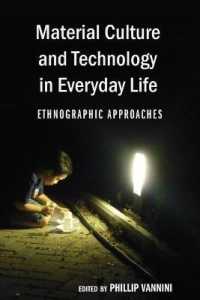Full Description
This book contributes to the existing body of knowledge on English Medium Instruction's (EMI) role in equity and social justice and adds to the ongoing conversation by providing the Asian perspective to it. It showcases scholarly works by scholars and researchers in the field and presents their diverse voices on EMI and social justice in a single volume. This book focuses on different aspects of the issue on EMI, equity, and social justice in different Asian contexts while providing a holistic picture of social justice in English language teaching in the region. It focuses on the current context-specific EMI practices situating them in their historical pretext, employs prevalent theoretical as well as methodological models and approaches to study such practices, considers curricular and pedagogical considerations adapted to address the multitude of needs of EMI, and examines controversies surrounding the conceptualization, plan/policy, and implementation strategies of EMI.
Contents
Equitable EMI in Asia Perspectives on Possibilities.- English Medium Instruction the Internationalization of Higher Education (IHE) and Graduate Employability A Nuanced Conversation about Social Justice.- An Antipodean Case of South AND Southeast Asian Students Reflections on the Realities of Real English in an EMI Course.- EMI and Social Justice.- Language, schooling and inequalities for ethnic minority children An ethnography of medium of instruction policy in Nepal's public schools.- Schools as sites for the reproduction of social inequalities Neoliberalism, dual medium instruction and social (in)justice.- Student attitudes and difficulties with EMI courses in the four elite South Korean universities.- Measuring the 'Unmeasured' EMI Programs in Thai Public Schools.








